There exists a special kind of water that cannot be found in grocery stores, malls, or water fountains anywhere in America – one with a taste that cannot be quickly forgotten. That is right: microorganism-filled, mucky pond water. Delicious.
WEGO’s environmental science classes visited Blackwell Forest Preserve on Nov. 7 to learn about how mussels and other microorganisms impact their local environment. The students were able to participate in water testing activities throughout the course of the full-day field trip.
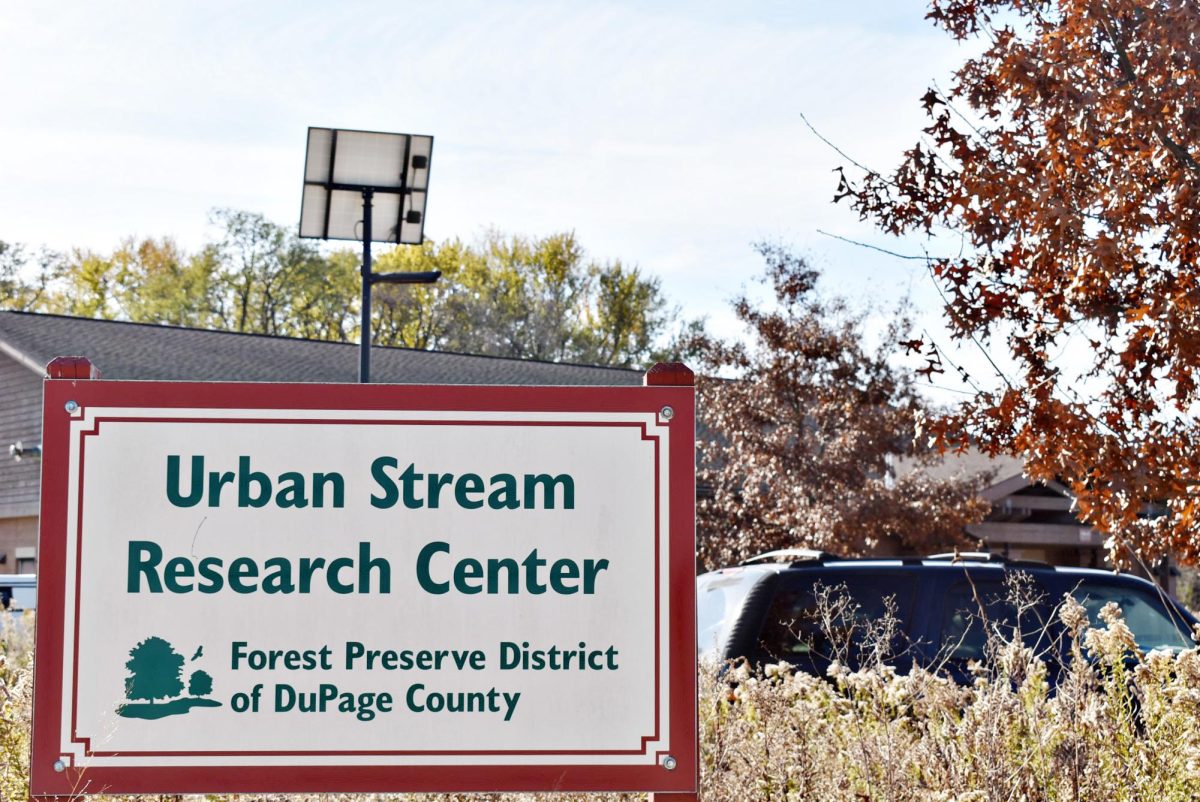
After stepping off the bus, students are greeted by this entry sign to the facility. The aquaculture facility is just over a decade old, and includes a complete workshop for research. Its mission is to “keep common mussel species common in an urban stream system.”
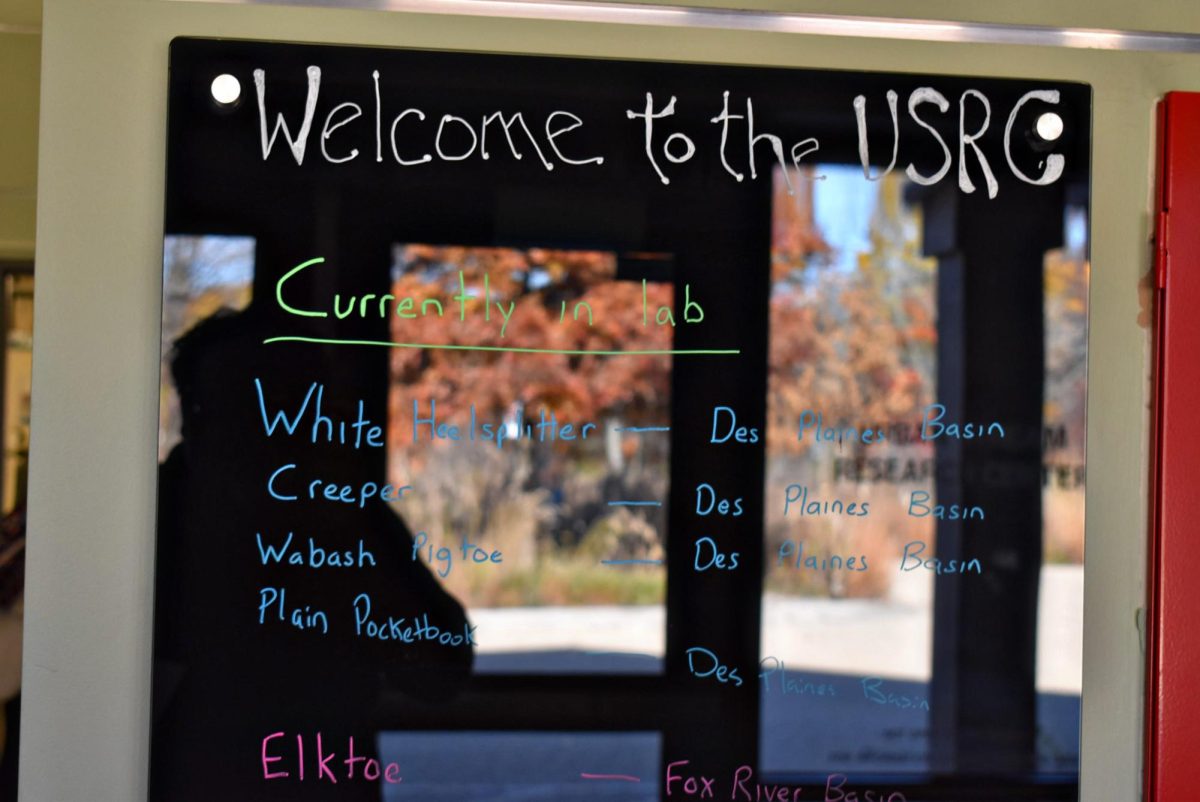
The laboratory invites students in with an overview of the microorganisms currently being studied by scientists on site. The five displayed are types of mussels, ranging from the creeper to the plain pocketbook, all which help stabilize their ecosystem.
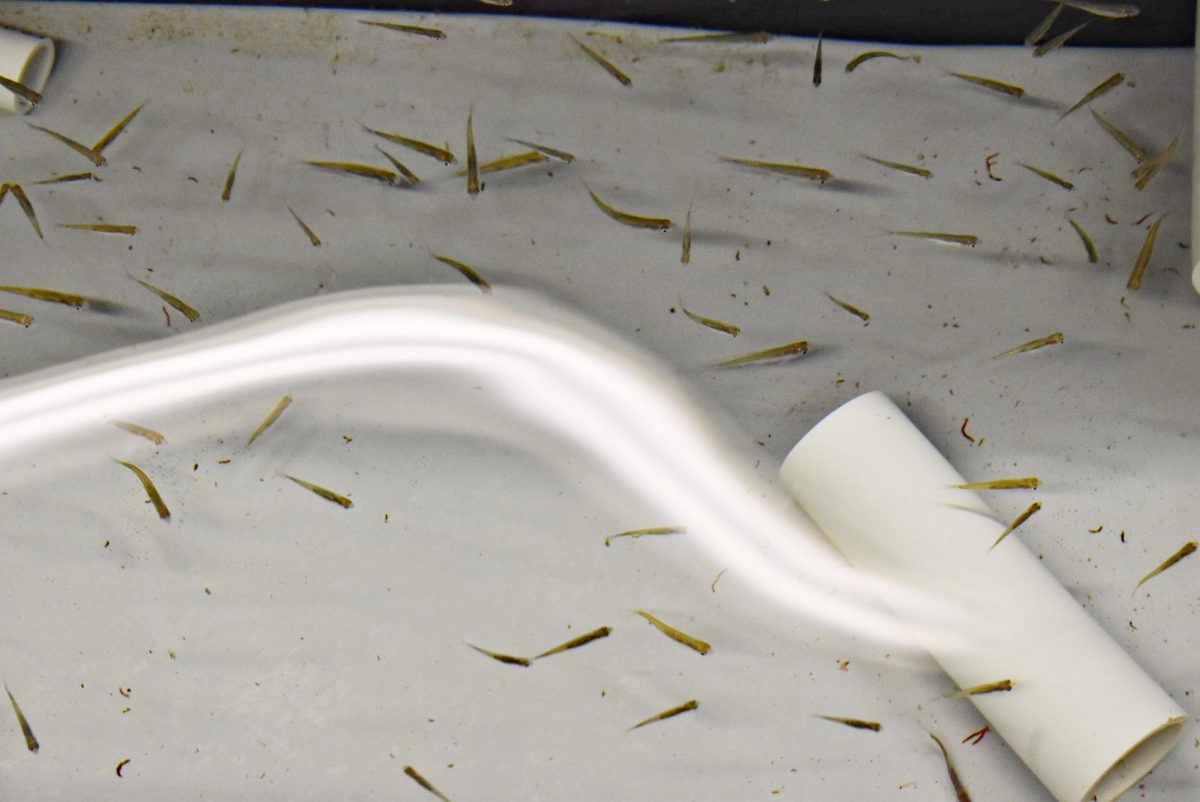
The crystal clear water allows researchers the chance to fully observe the animals under bright lights of the facility, which has been specially outfitted for analysis.
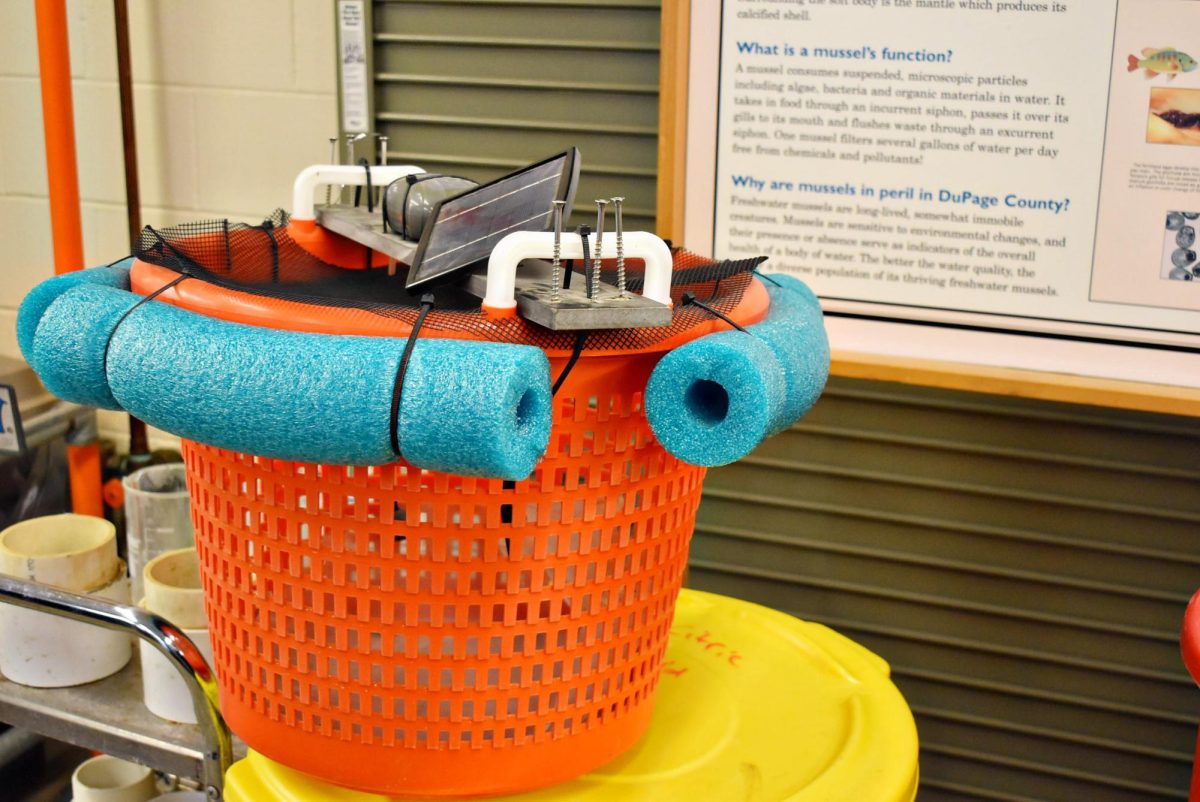
This modified basket allows the team to gather readings of several contaminants’ presence in the water. Behind the contraption is an illustration outlining the importance of the mussel, and why water quality impacts their habitat so considerably.
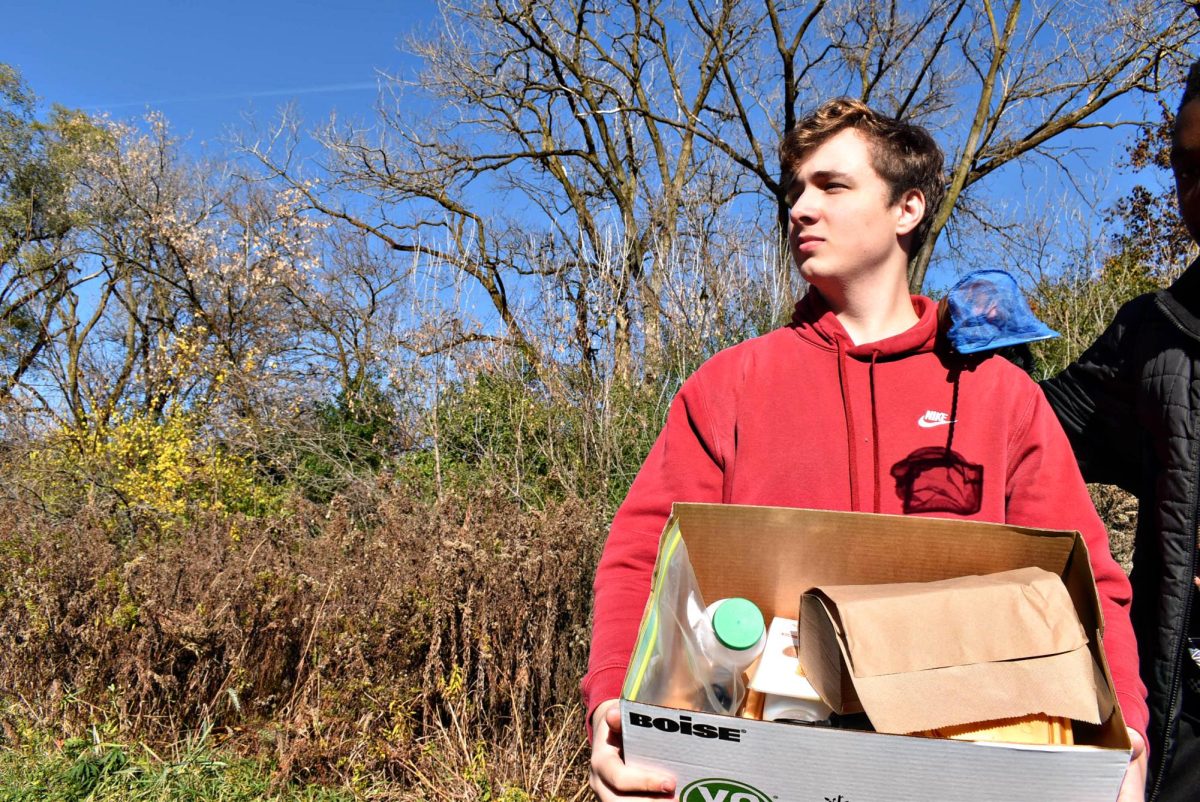
The students are separated into groups to test the quality of water from ponds within the forest preserve. Senior Ryan Blackburn carries the supplies for his group.
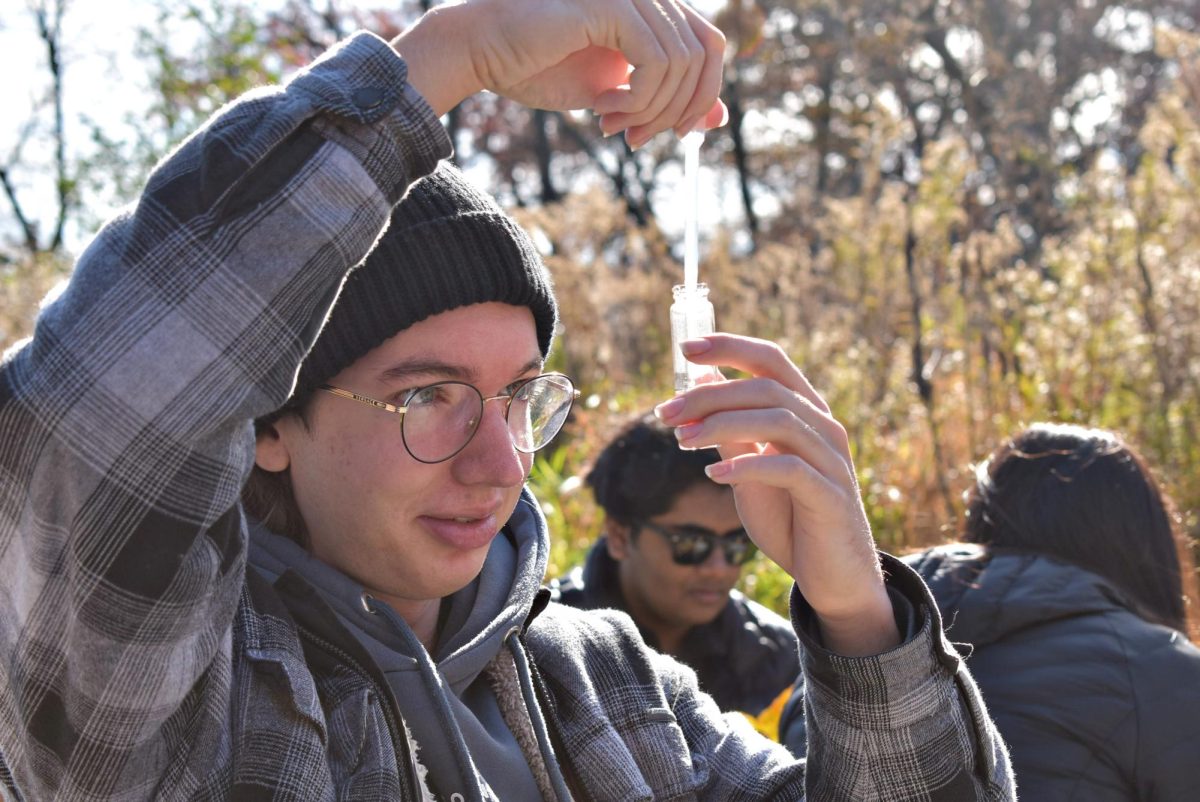
Senior Owen Thompson grabs a sample of water to be tested.
“We test the water for a few things – its pH level, temperature, its oxygen level, nitrate & phosphate content, the amount of oxygen dissolved in the water, and fecal coliform bacteria. Each process was a little bit different, but each process involved measuring out stream water into test tubes or containers, and using each tool respectively to get our readings,” Thompson said.
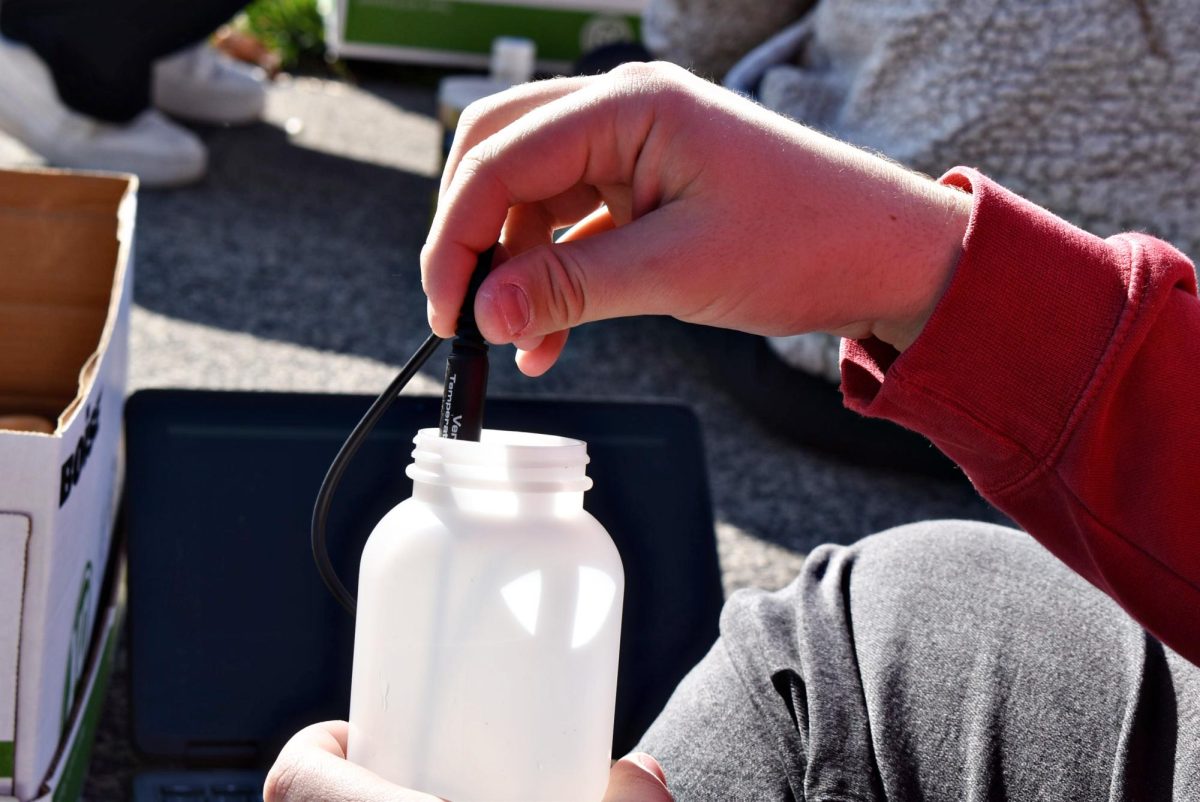
A Vernier sensor takes the temperature of water collected out of the pond. Water temperature is just one of several factors that must be taken into account when analyzing the habitat.
“The nitrogen, phosphorus, pH, and fecal coliform bacteria tests all used pills that dissolved in the stream water to give us our information, while temperature and oxygen level utilized metal instruments submerged in the stream water to give us our information,” Thompson said.
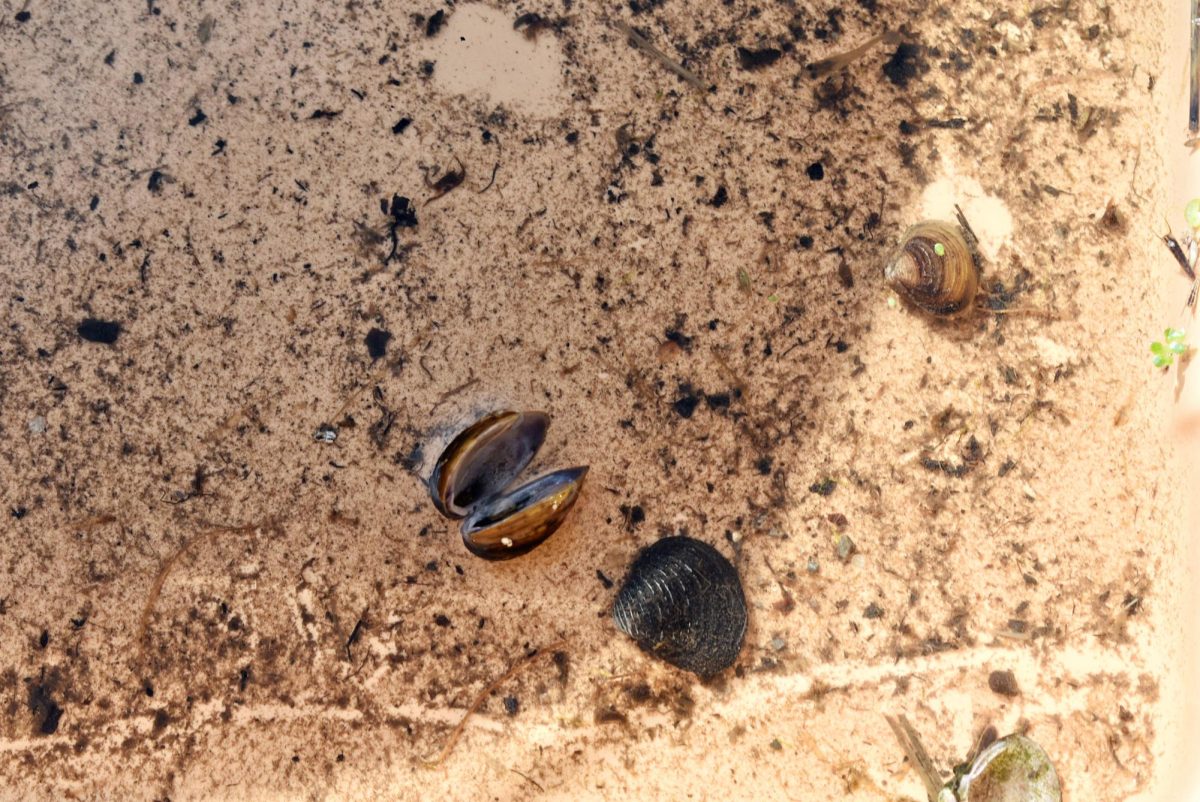
A close look at microorganisms, in this case, mussels, present in the pond.
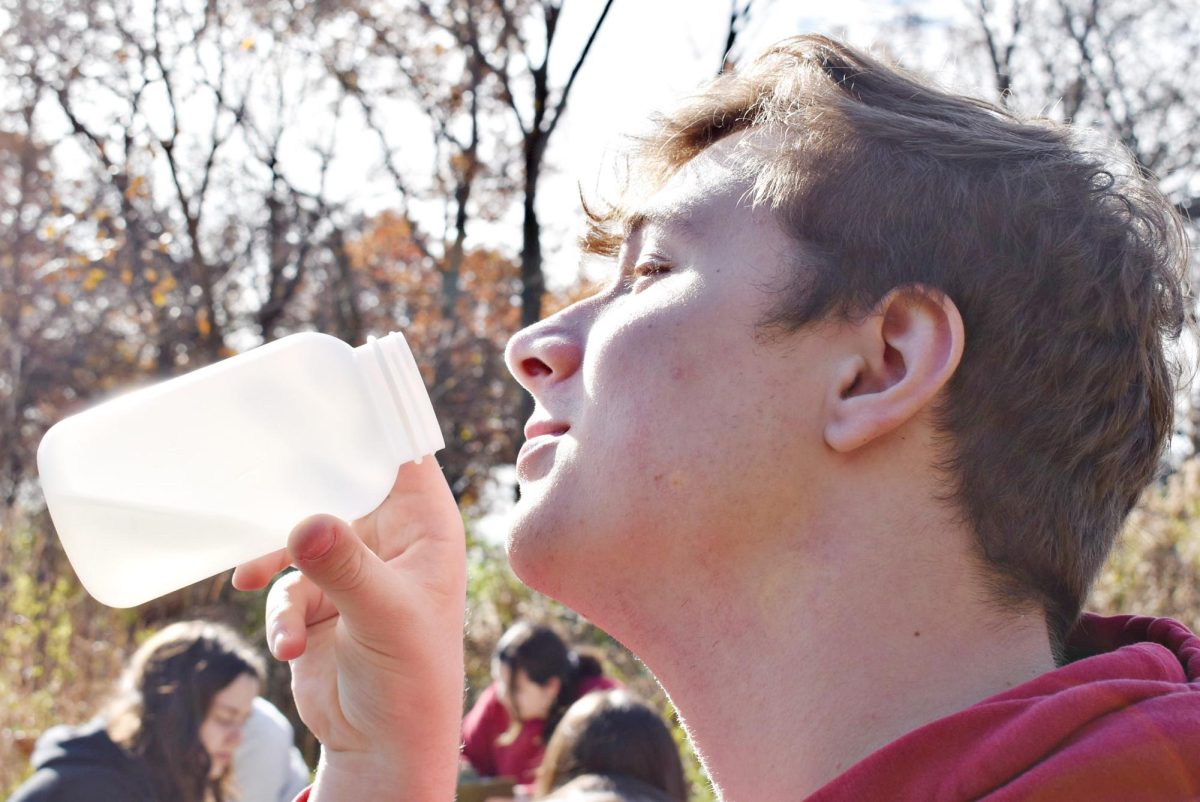
Blackburn pretends as if he is about to take a sip of the mussel-filled pond water. While the students enjoyed the field trip, they also learned valuable lessons.
“A takeaway from this experience is the importance of keeping our rivers and lakes safe. I had a great time learning about what kinds of bacteria grow into our lakes and rivers, while finding out methods of monitoring the qualities of water,” Blackburn said.




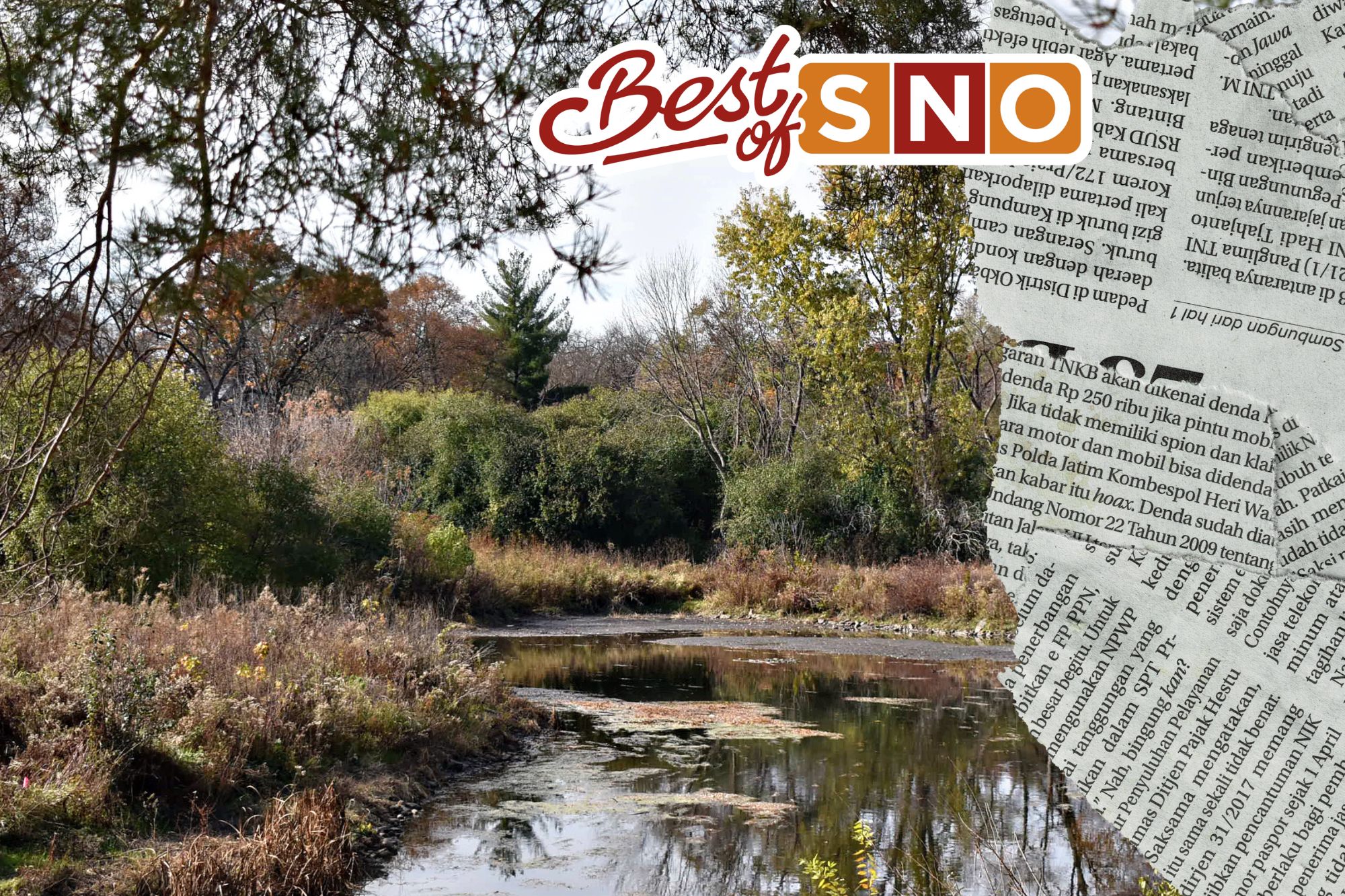
Mrs. Gierzynski • Nov 27, 2023 at 12:19 pm
Great way to experience being a scientist. One of my sons is a hydro-geologist, and he LOVES “doing” science.
Teni • Nov 27, 2023 at 8:17 am
??